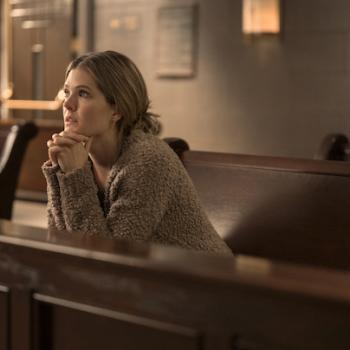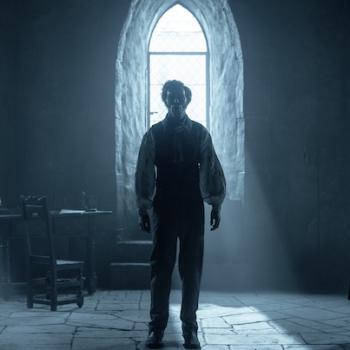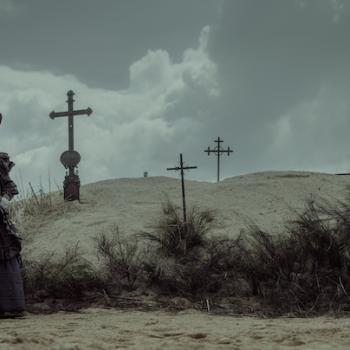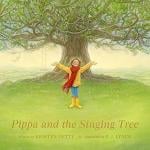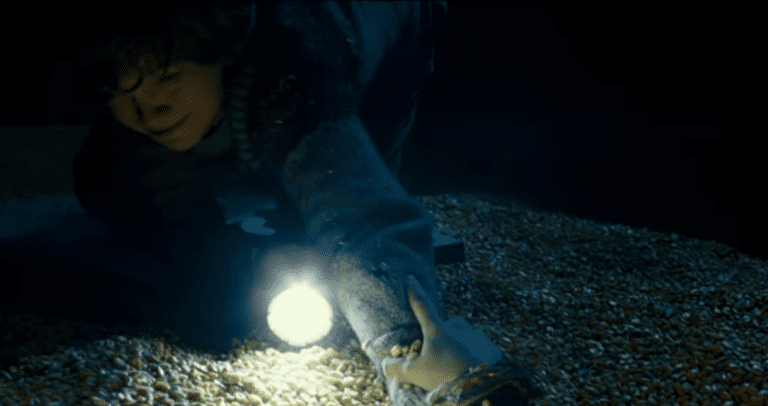
Water and Grain
The contraption the Abbotts make for their unborn child is both simple and complex. They build a box for the baby, able to be sealed and soundproofed and equipped with an oxygen mask. In some ways, it feels a bit like a coffin, but one that holds life instead of death. Placed as it is in the Abbott’s concrete basement, Evelyn and Lee hope it’ll be enough to keep the sound from traveling.
But even such well-laid plans never run smoothly in movies like this. The basement where they keep the box is flooded by water and invaded by one of the sound-seeking creatures. The box floats on the water, threatened by the monster seeking to destroy it.
As I watched this scene, it reminded me of a Bible story: Moses in the basket, floating down the Nile—the hope of a people held in captivity.
The Bible is filled with boxes filled with precious cargo: Noah’s floating, wooden box holding the remnants of the world. The Ark of the Covenant, holding a promise from God in the shape of a couple of stone tablets. Sometimes, Mary, mother of Jesus is called an ark, too—holding the light and the hope of the world.
Interesting, too, how often water (or water-like elements) crop up in A Quiet Place. Lee and Marcus share their first unfettered conversation—talking and even shouting—by a waterfall that covers their sound. Evelyn takes refuge from a monster in a bathtub. The sand and chalk that the Abbotts spread on the pathways to town and elsewhere—delineating safe passages—remind me a little of Japanese Zen gardens (designed to bring peace and inspire quiet contemplation) where the sand represents water and rocks and trees are representations of land. In A Quiet Place, those sandy passages are like streams through a wilderness—a safe haven almost akin to the Mississippi river in Huckleberry Finn.
But as we see in Noah’s story, water is a destroyer, too, and we see a symbolic near-drowning when Marcus falls in a grain bin and sinks into the grain. Despite her own risk, Regan dives in after him and, eventually, pulls him out, but not before both nearly die there, swallowed up by the almost liquid seeds. Again, there’s a hint here of, if not baptism, at least the symbolism of what baptism represents: A death to oneself and a rebirth into greater purpose.
So it’s particularly interesting that Regan’s makeshift cochlear implant—one that her father lovingly made for her—apparently goes a little berserk when they’re in the grain bin. A monster’s in the bin with them, and he opens his impressive hearing organs to try and suss them out. Something in that action triggers the implant to emit a terrible noise that drives the critter almost crazy. It tears through the metal bin, unintentionally providing an escape for Regan and Marcus, too. Regan doesn’t realize it yet, but it’s one of the audience’s first hints that those implants, though they don’t work as intended, are something of a … gift. A weakness that becomes, paradoxically, a weapon.
My power is made perfect in weakness, Paul quoted God in 2 Corinthians 12:9. Therefore I will boast all the more gladly of my weaknesses, so that the power of Christ may rest upon me.





